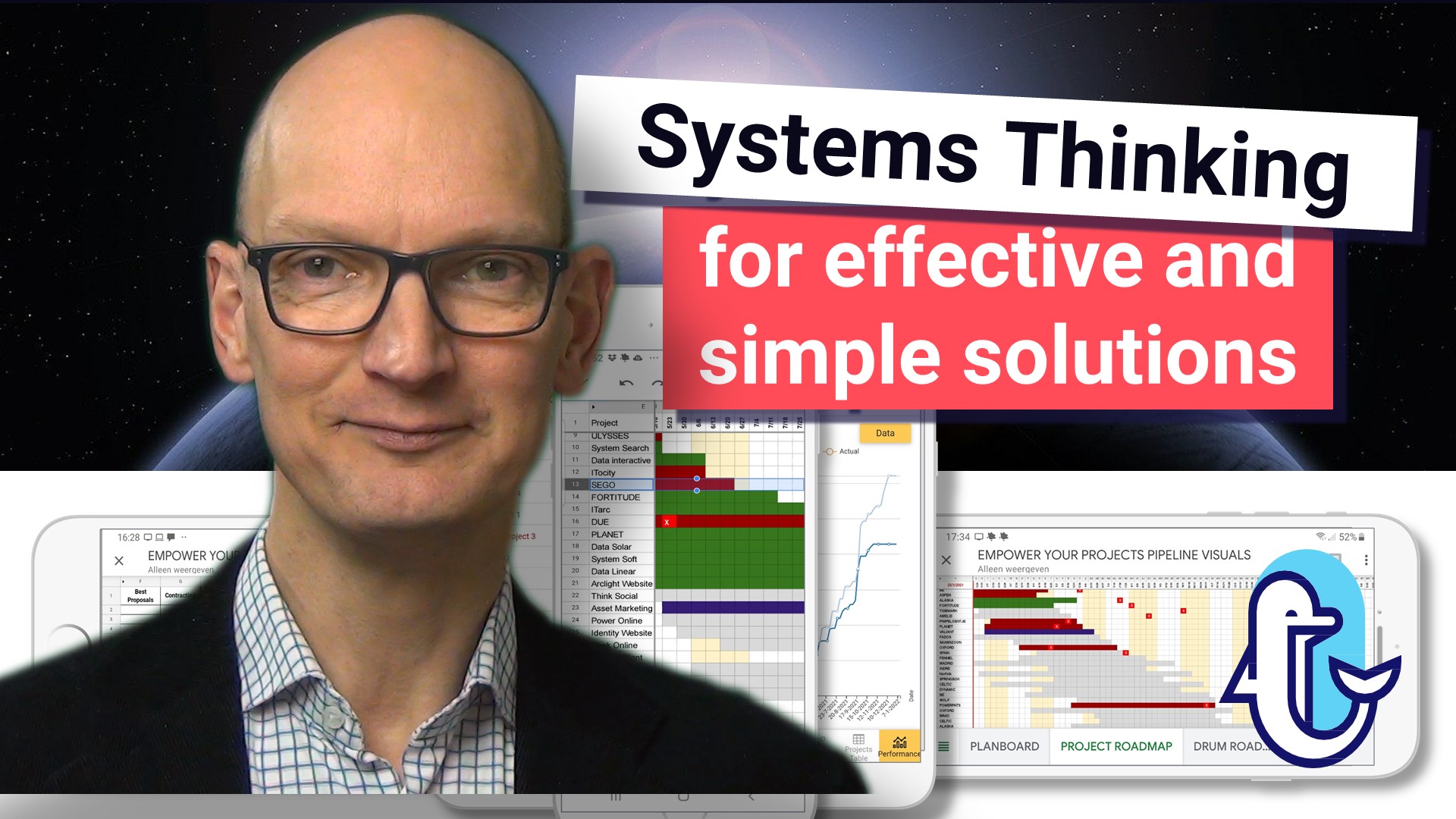It is all getting very complicated
Our organizations and structures are getting more and more complex and bigger, while the human logic-brain only thinks about one thing at a time clearly.
I found systems thinking very helpful to create clarity and understand these structures, while only having to think about one thought at a time. This is also the foundation of the Theory of Constraints.
My struggle was with multi-project resource planning
My stories started when I failed with multi-project resource planning. Whatever I tried, nothing seemed to work. And couldn’t find satisfactory solutions in literature or when I asked experts in the field.
It was a major breakthrough when I finally tackled it. It only took a Saturday afternoon to write down how to do it. This breakthrough materialized in a project pipeline app for scheduling projects across organizations and allocating people to projects, without project schedules and without knowing who is involved. I know it sounds weird, but the benefits are amazing of course. It feels like getting the grand price without having to work for it.
Initially, I was just excited when I got the engines for this app to work and when I saw that clients were boosting productivity by 36-49% after an implementation of only 8 days. Implementing multi-project resource management typically takes a year. Or two. When, during the pipeline boot camp, participants asked why this is so much better than other existing solutions, and what then are the wrong assumptions they are based upon, I couldn’t answer.
New definitions into Systems Thinking and Theory of Constraints
Systems Thinking is great for defining and describing the system. Theory of Constraints is great to explain what must be changed and improved. To give an even better explanation I modified the definitions to be more precise. So I can better explain.
This move appeared to be very powerful. It enabled me to find new systemic solutions for other domains. To determine what to for starting up your company (instead of wasting your time doing the wrong thing). Or for improving sales without putting your happiness in the hands of scammers. To understand how project organizations work without losing sight of the forest by the trees. For finding constraints in compound-complex systems. When it becomes really complex you need this.
Defining Systems
According to Wikipedia: A system is a group of interacting or interrelated elements that act according to a set of rules to form a unified whole. A system, surrounded and influenced by its environment, is described by its boundaries, structure and purpose and expressed in its functioning. Systems are the subjects of study of systems theory.
I use this definition: A system is what is needed to fulfill a purpose. A system is defined as the enabler to fulfill a purpose.
These are some examples:
- So a rock can be system when you pick it up for the purpose of hammering in a nail.
- Projects are systems for the purpose of completing big and complex works we have never done before.
- Project organizations are systems for the purpose of executing projects more efficiently.
- People are systems for getting the work done (when you hire the to get the work done).
Enablers
Enablers are the systems within other systems that interact or interrelate to fulfill a purpose.
When an enabler is missing, the purpose can not be fulfilled (else it wouldn’t be an enabler). This makes the new definition for constraint. The constraint is a missing enabler.
The core principle of the Theory of Constraints is that systems only can be improved by removing or relieving a constraint. This new definition of a constraint suggests that systems can only be improved by providing a missing enabler.
Note that external influences might disable the system. Depending on your perspective, such a disabler can be also a constraint. Or the constraint is the missing enabler to deal with disablers. I don’t think it really matters right now where exactly where to put the line.
I use these new definitions because they are better constructs for analyzing project organizations, startups, sales processes and for identifying the constraint. At least to me, and it helped me to develop some fascinating strategies or solutions.
I’ll give two examples in the following posts:
- Project Pipelines / Multi-Project Resource Allocationlanning, project pipelines / improving productivity
- Double Shop Floor Plan / Startups / improving sales
